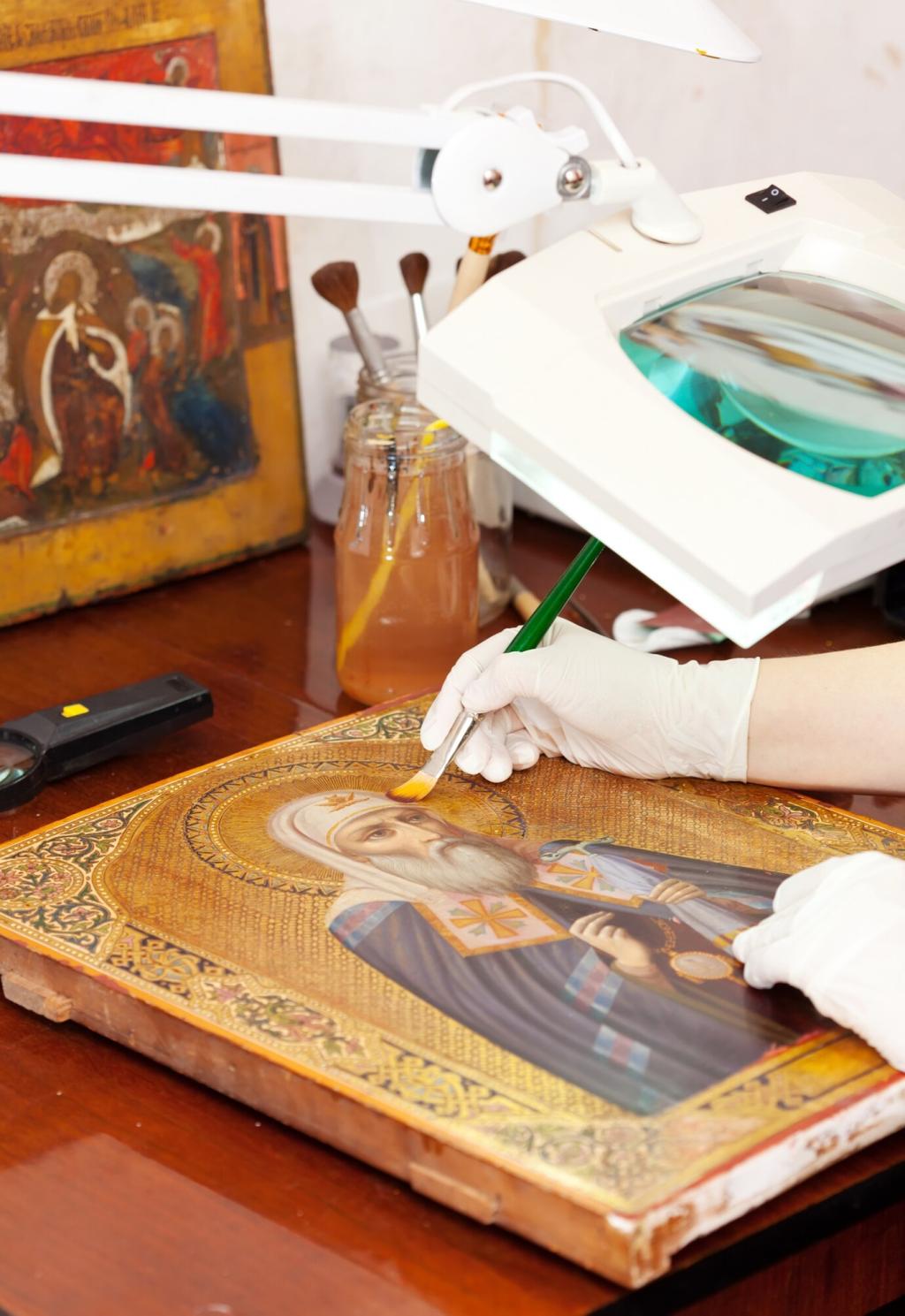
Exploring the Technique Behind Famous Landscapes
Today’s theme: Exploring the Technique Behind Famous Landscapes. Step into studios, fields, and storm-lit coastlines to uncover how masters shaped light, color, and space—and learn how you can try their methods yourself. Share your thoughts, subscribe for more deep dives, and tell us which landscape technique you want to explore next.
Light and Atmosphere: Painting the Air Itself
Monet’s Fleeting Hours
Monet painted the same field repeatedly, chasing changes in light minute by minute. He broke color into small strokes, letting the eye blend hues into living air. Try timing yourself and repainting the same view across the day.
Turner’s Luminous Glazes
Turner layered transparent glazes over bright grounds to create glowing storms. Each veil of color nudged atmosphere forward, without muddying the lights. Build thin layers, drying between passes, and watch the sky gather depth.
Breath in the Brushwork
Atmosphere is rhythm: softer edges in distance, crisp accents nearby. Feather your edges where air is heavy with mist, and sharpen around foreground sparkles. Comment with your edge-control tricks and we’ll feature favorite tips.
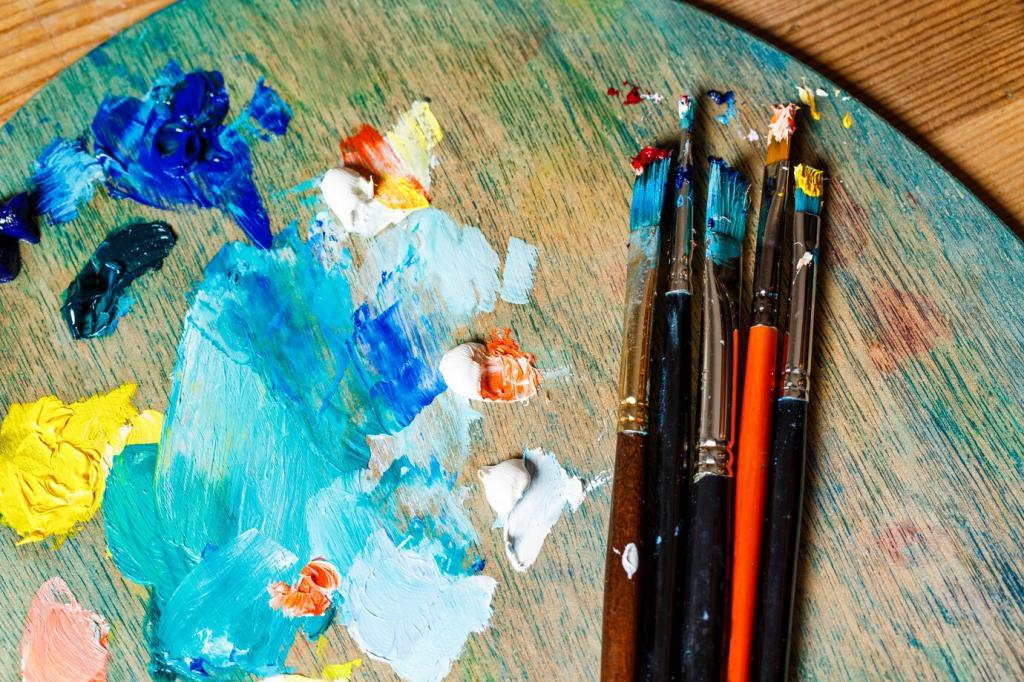
Depth and Distance: Making Space You Can Walk Into
Atmospheric Perspective in Practice
Far hills drift cooler, lighter, and softer; foregrounds run warmer, darker, and sharper. Ruisdael and Constable used this shift relentlessly. Swatch distant blues against nearby ochres, then squint to verify values before committing paint.
Anchoring the Foreground
A low stone wall, a cart track, a wind-bent reed—one grounded detail pulls viewers inside. Place your anchor at a strategic intersection. Share a photo of your chosen anchor and why it locks the scene.
Scale and Overlap Games
Overlap forms to establish order: tree before barn, barn before ridge, ridge before clouds. Tiny figures or livestock instantly calibrate immensity. Hudson River School painters mastered this; try layering silhouettes in quick thumbnails.
Brushwork and Texture: Surfaces That Breathe
Van Gogh laid paint thick where energy surged—wheat glinting, cypress twisting. Thick marks hold light, creating sculpted rhythm. Load a bristle brush, press, then lift cleanly. Tell us how impasto alters your mood while painting.
Brushwork and Texture: Surfaces That Breathe
Scumbling drags a nearly dry, lighter pigment across darker underlayers, catching texture like fog over hills. Constable’s sky studies glow because of it. Use a worn brush, minimal medium, and circular touches to suggest bursts.
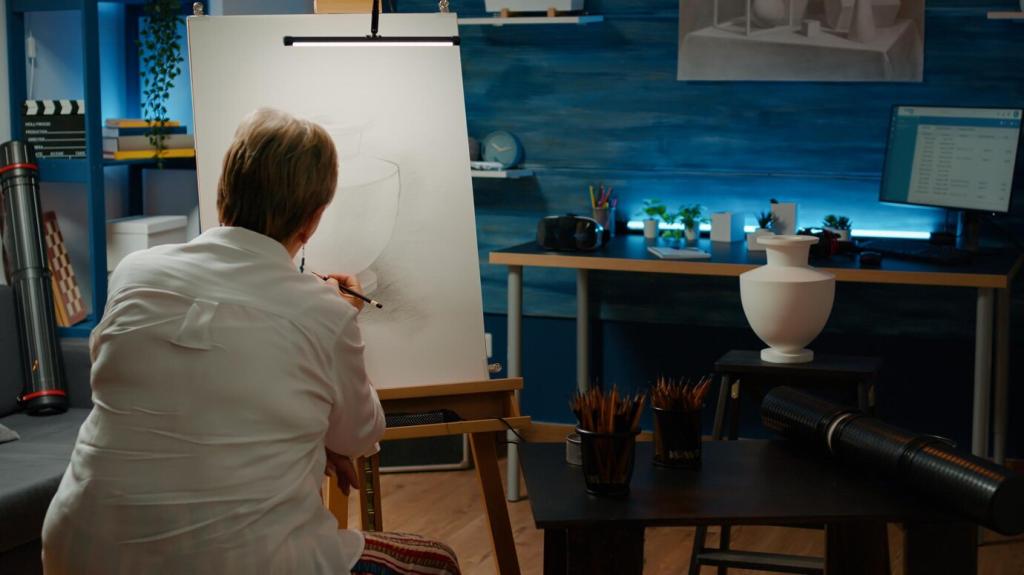
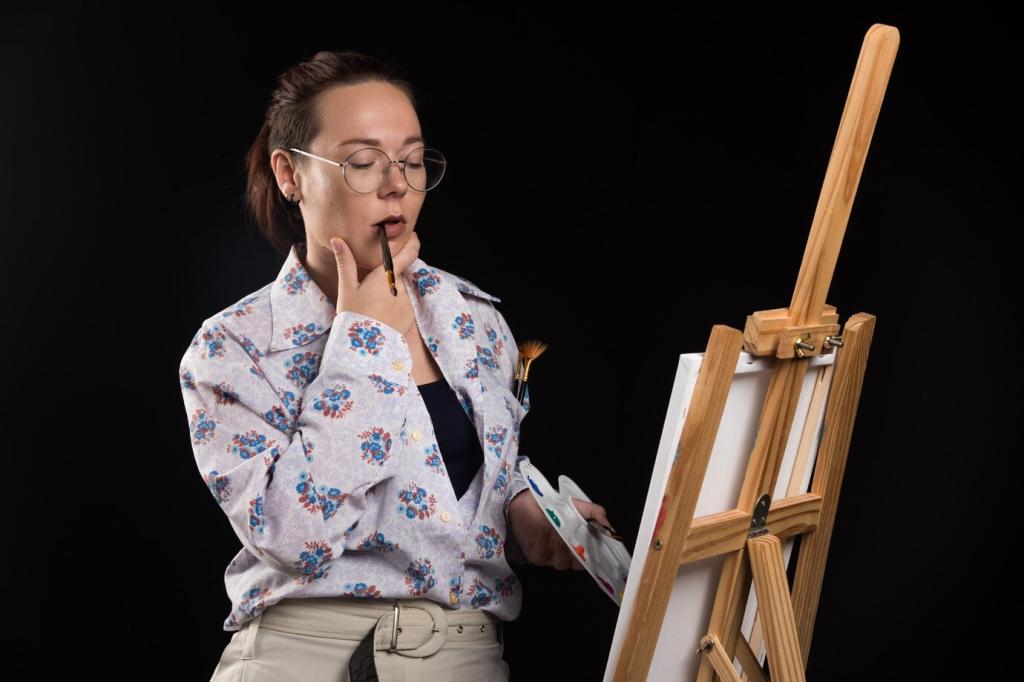
Prussian Blue and the Sea
Hokusai’s Great Wave popularized imported Prussian blue, prized for saturation and permanence. Its cool power begs careful balance. Pair with warm earths or luminous yellows, and post a swatch grid showing your favorite sea mixes.
Desert Harmonies with O’Keeffe
O’Keeffe simplified shapes and tuned colors to the hush of desert space—rose cliffs, bone whites, cobalt skies. Limit your palette and stretch value range. Which three colors describe your region’s soul? Tell us and why.
Twilight Palettes That Sing
Dusk compresses values and cools chroma. Choose a dominant temperature, then reserve one contrasting accent. A single warm window or embered cloud can anchor the scene. Share your dusk studies for community feedback.
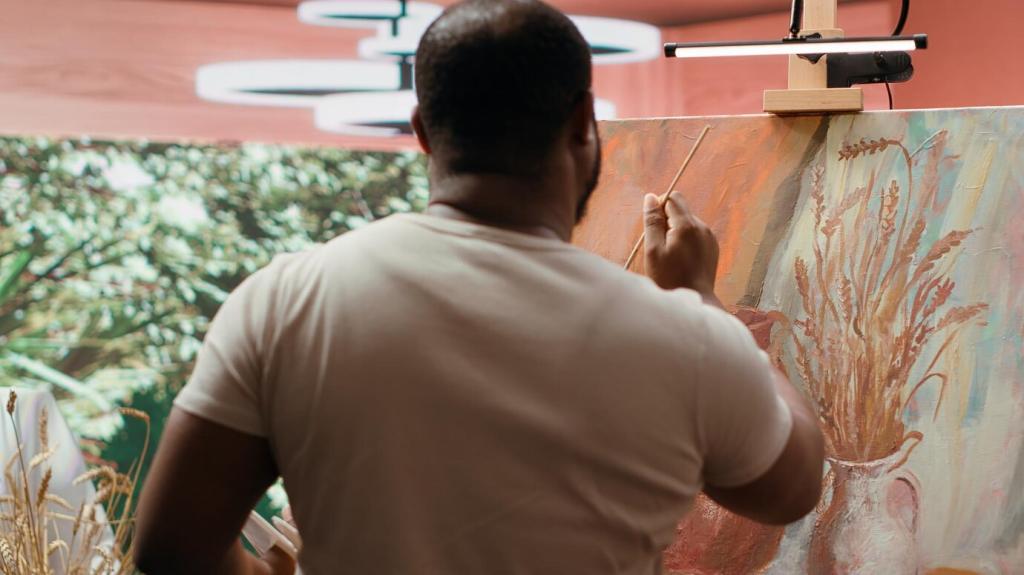
Composition and Story: Guiding the Journey
Caspar David Friedrich often placed a figure with back turned, inviting us into the landscape. Consider a subtle human trace—footprints, a coat, a distant walker. Post a sketch where a small sign of life deepens the mood.
Composition and Story: Guiding the Journey
Rivers, roads, and fence lines steer the eye. Avoid ramming them off corners; let them meander. Break a line with a bridge or bending tree. Share thumbnails exploring three route options and describe what each feels like.
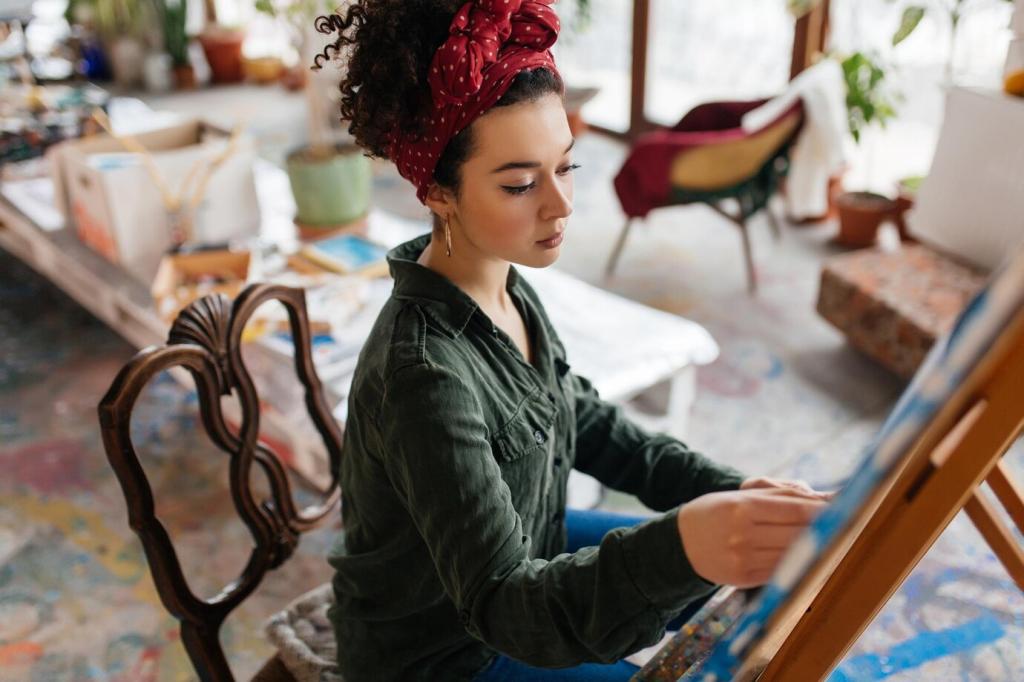
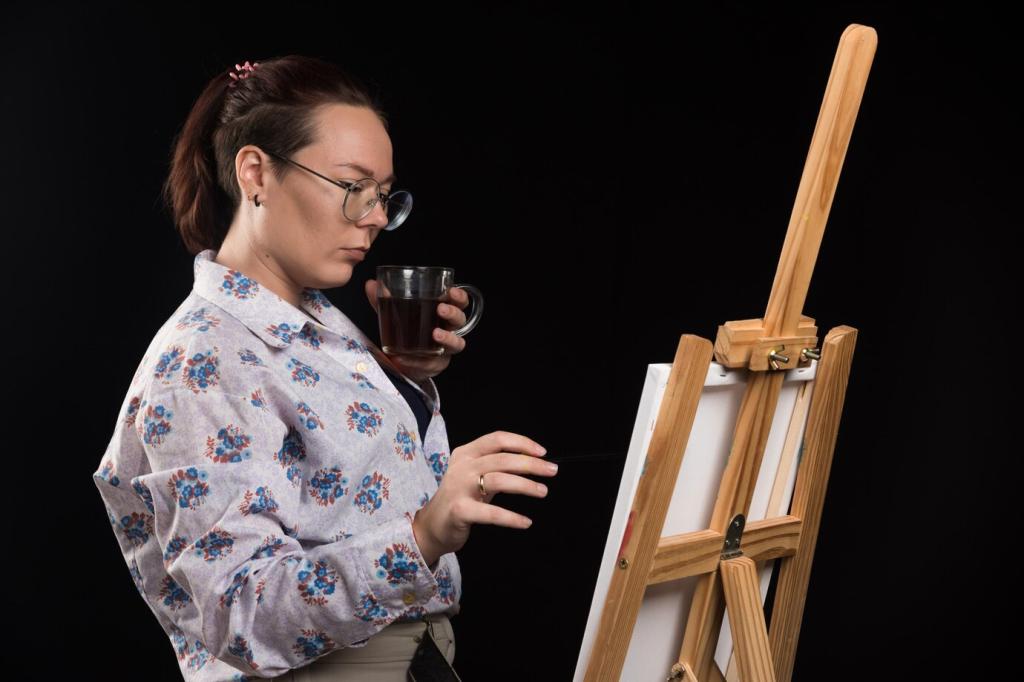
Materials and Methods: From Studio to Field
Paint Tubes and the Birth of Plein Air
Portable tubes freed painters from studios in the 1800s, letting Monet chase changing light outdoors. Pack a lean kit: limited palette, lightweight easel, viewfinder. Comment with your ultralight setup and must-carry extras.
Watercolor Atmosphere, Oil Authority
Turner exploited watercolor’s granulation and blooms for vaporous skies, then translated lessons to oils. Try a watercolor study first to design color flow, then build oily confidence over a toned ground. Share both stages.
Brush Library, Purposeful Choices
Filberts for soft foliage, flats for architecture, riggers for twigs and distant masts. Label brushes by task to reduce hesitation. What unexpected brush gives you the best clouds? Tell us so we can test it next session.
